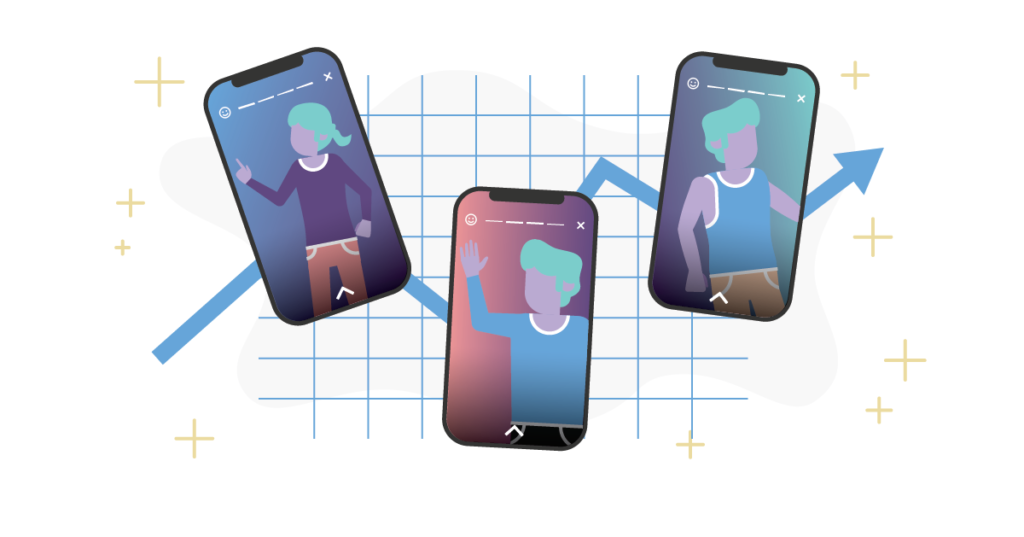In the past few years, influencer marketing has become big business. Top influencers are banking millions of dollars with their campaigns and Instagram photos, but is this coming to an end? Recent news points to just how manipulative these larger influencers can be, and how things might not be as they seem.
Cue micro-influencers, which might be the marketing world’s solution to the influencer problem. A micro-influencer is an individual with 1,000 to a million followers, though they’re usually at the smaller end of that spectrum.
Because their accounts are smaller, they’re seen as more relatable by their audience, and they usually are open to genuine collaborations with brands. In this guide, we’ll take a closer look at what exactly micro-influencers are and how they’re changing the world of ecommerce.
Why Micro-Influencers Matter
Why are micro-influencers becoming such a focus today? What circumstances led to them taking over the spotlight so quickly? Micro-influencers have a stronger grip on their audience. They’re perceived as closer to their audience and their niche, whether it is food, lifestyle, fashion, or beyond.
The data backs up this perception because influencers with only 1,000 followers generated an 85% higher engagement rate than accounts with 100,000 followers. Brands are starting to realize the higher the number of followers, the lower the engagement rate. The sweet spot in follower counts seems to be in the 1,000 to 100,000 follower range.
A smaller audience means influencers can have a more personal, genuine interaction with their followers. This is basically marketing gold. A startling 84% of consumers state that they trust recommendations from peers over advertising. Big-name influencers no longer count as peers, and micro-influencers have taken the place since they don’t have the same feeling of celebrity status big-name influencers have.
Why Ecommerce Brands Are Using Micro-Influencers
So how does this tie into ecommerce? Frankly, micro-influencers are a better value. They’re more trustworthy, accessible, and able to create a unique campaign targeted to your audience. If you’re an ecommerce brand trying to raise awareness on social media, you’ll definitely benefit from a micro-influencer collaboration.
Why work with a micro-influencer?
- Niche markets: Micro-influencers are usually tapped into very specific markets.
- Conversion rate; You’ll experience a higher conversion rate with the right collaboration since people are more likely to trust these smaller influencers.
- Affordability: Of course, micro-influencers are a much more affordable collaboration. Some will work for free products while others will have their own rates, but you can be confident the cost will be significantly lower than a celebrity influencer.
- Trust: Followers trust micro-influencers. If you engage with your audience through these smaller influencers, you too will be seen as trustworthy.
- Engagement: Micro-influencer campaigns will generate a higher engagement rate. While fewer people might see the campaign compared to a big-name influencer, you’ll have more genuine interactions.
If you’re not yet convinced, think of it this way: The number of followers someone has ins’t necessarily an accurate reflection on whether those followers will buy or not. Micro-influencers shouldn’t be defined by their number of followers. They’re the person their audience goes to to ask product questions before making certain purchase decisions. They’re a trusted friend, and that’s priceless.
How to Work with Micro-Influencers
Ecommerce businesses can leverage the trust micro-influencers have with their audiences to spread awareness about their own brand. That said, make sure you’re taking the time to create a high-yield collaboration. That means knowing that this is a good fit for your audience and that you’ve chosen the right micro-influencer(s).
First, you need to know where to find influencers. This is the easy part. In fact, you might have micro-influencers already following you on social media or your email list. A great way to find them organically is by searching on social media with relevant hashtags and researching top accounts in your niche.
When working with micro-influencers, make sure you’re staying relevant. Always emphasize engagement over the reach, and choose influencers who have values that align with your products or brand.
A word of warning: never suggest influencers pay for your products. Always be courteous and offer free products or trials and payment. Work together to find an authentic way to promote your product through their platform. Don’t be afraid to let their creativity shine. They know their audience best.
Establishing an affiliate or referral program is an excellent way to monitor the success of your campaign. If you use a platform to host your online store, you can get more info here on finding the right support.
Are You Leveraging the Right Influencers?
Influencer marketing is evolving into a new world of smaller bloggers and influencers. This is good news not only for smaller accounts but also for brands looking to tap into new audiences. Leveraging the right influencers is an inexpensive, effective way to achieve your marketing goals.
While brands will need to keep a close eye on the legitimacy of larger influencers moving forward, it’s time we all try something smaller on for size. As an ecommerce business, these effective, achievable ways to reach your audience are too good to pass up.



